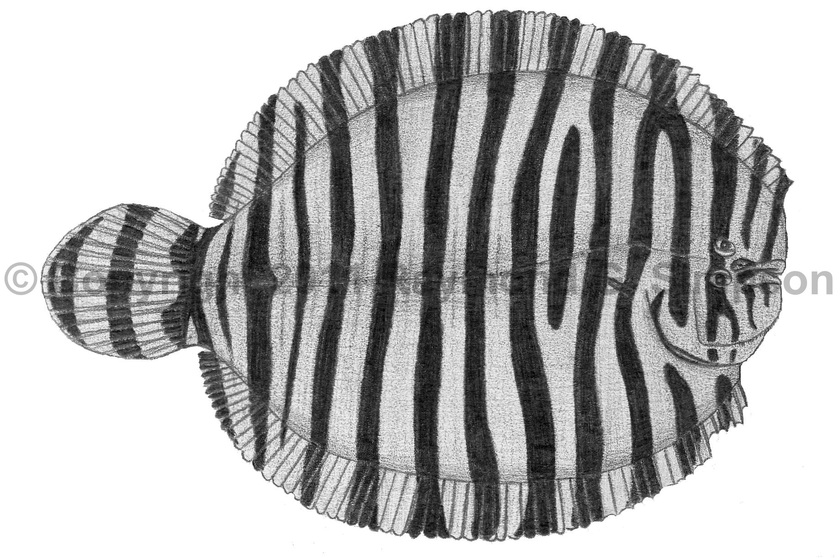
Common Name
Nude Sole
Year Described
Kaup, 1858
Identification
Dorsal Fin: 60-69
Anal Fin: 44-50
Pectoral Fin: 1-3 (rudimentary on ocular side only)
Pelvic Fin: 5 (continuous with anal fin)
Head and body scaleless with loose skin. Blind side with many dermal folds. Mouth is terminal and tiny, with tiny villiform teeth only on blind side of jaws. Opercular cavity very small. Short dermal cirri (<2mm in adults) dorsal to ocular-side lateral line. Accessory lateral lines (perpendicular to lateral line) number 7-10. Third accessory lateral line has 26-59 (usually 34-44) pores.
Color
Pale base color with 13-21 (usually 15-18) full and partial dark crossbands on the body from snout to caudal peduncle, extending continuously onto the dorsal and anal fins. Pale interspaces 1.5 times wider than dark bands. Two to five slightly curved bands on the caudal fin. Blind side cream to white. Juveniles melanic, without bands.
Size
Adults commonly to 12cm SL. Maximum size to 15cm SL.
Habitat
Soft bottoms from 1-100m.
Range
Northwestern Yucatan Peninsula to northern Brazil. Also the Caribbean islands from Jamaica to the Virgin Islands.
References
McEachran, J.D. and J.D. Fechhelm. 2005. Fishes of the Gulf of Mexico. Volume 2: Scorpaeniformes to Tetraodontiformes. University of Texas Press, Austin. i-viii +1-1004.
Munroe, T.A. 2002. Achiridae (pp 1925-1933). In: Carpenter. 2002. The living marine resources of the Western Central Atlantic. Vol. 3: Bony fishes part 2 (Opistognathidae to Molidae), sea turtles and sea mammals. FAO Species Identification Guides for Fisheries Purposes. American Society of Ichthyologists and Herpetologists Special Publication No. 5.
Other Notes
Allopatric with the similar G. melas, which occurs off the SE U.S. coast and the Bahamas.